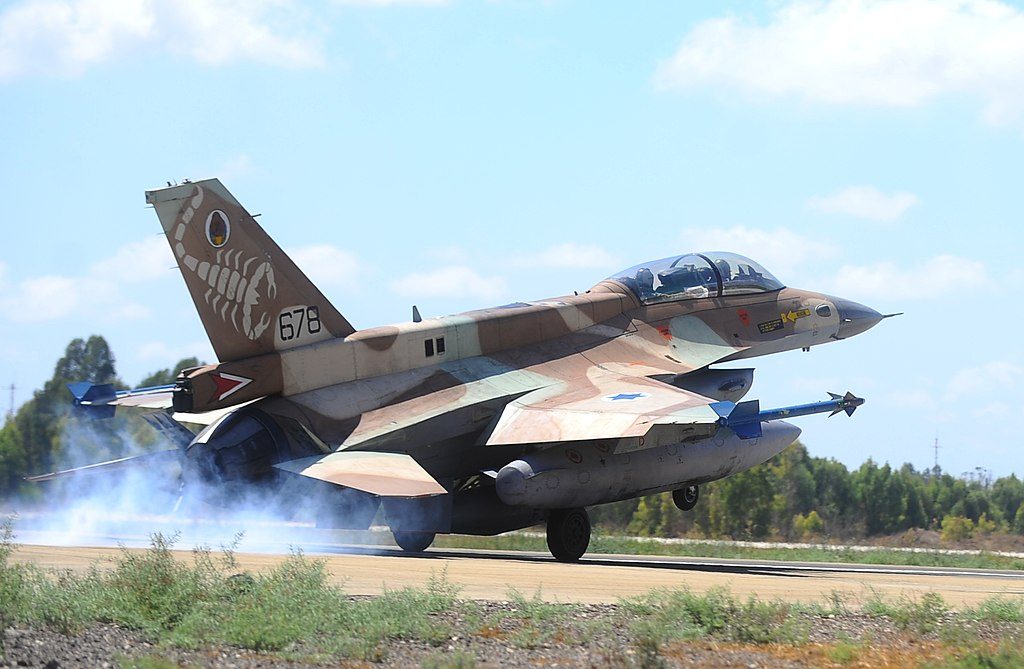
On Saturday evening Israel targeted an area southeast of Damascus in a strike that targeted Iranian Quds Force operatives, Sh’ite militias and drones. These three components are key to Iran’s strategy in the region and its threat against Israel as well as other US allies. Iranian drone technology has been used by Houthi rebels in Yemen against Saudi Arabia for instance, and Shi’ite militias have been accused of harassing US forces in Iraq.
The airstrikes on Saturday night come in a context of rising tensions across the region between Iran and the US, as well as recent alleged airstrikes in Iraq against the Shi’ite militias or what are called Popular Mobilization Forces (PMF). These militias were formed in 2014 to fight ISIS but increasingly they have taken on a form more similar to Hezbollah in Lebanon, but within even more power. In Iraq the PMF were incorporated as an official Iraqi security force in January 2018. They include numerous paramilitaries that have commanders who are often linked to Iran’s Islamic Revolutionary Guard Corps.
Iran’s IRGC was designated a terrorist organization by the US in April. Other militias that make up the PMF, such as Kata’ib Hezbollah, Harakat Hezbollah al-Nujaba and Asaib Ahl al Haq have been designated in the past. These groups are entwined with Iran’s regional ambitions and the IRGC’s Quds Force. They began moving into Syria to help fight against ISIS there in 2017 and in 2018 a base of Kata’ib Hezbollah was hit in a mysterious airstrike in Syria near the Iraqi border. It became clear in June 2018 when that base was struck that these militias were forming part of a larger Iranian-backed group of forces that could be used against Israel.
For instance in November 2017 Jonathan Spyer wrote at The Jerusalem Post that Iran was putting its finishing touches on a “land bridge” stretching from Tehran via Iraq to the Golan. In December 2017 Asaib Ahl al-Haq leader Qais Khazali visited southern Lebanon and peered into Israel, threatening Israel. The militias grew more entrenched as the ISIS war wound down in 2017 and as the Syrian regime began to consolidate gains in the summer of 2018.
At the same time that the Shi’ite militias, in both Iraq and Syria, were gaining momentum, Iran’s drones were also threatening Israel. One of them penetrated Israeli airspace in February 2018. In August 2017 former Air Force commander Amir Eshel said that Israel had struck in Syria more than 100 times in five years. That number grew to more than 1,000 airstrikes by January 2019 when former Chief of Staff Gadi Eisenkot said Israel had struck thousands of Iranian targets. In May 2018 Iranian-backed forces in Syria fired a salvo of rockets at Israel. This was one of the few responses to the Israeli airstrikes.
More recently in June 2019 an airstrike hit Tel al-Hara, a hill that overlooks the Golan from Syria. Syrian state media accused Israel of another airstrike near the Golan in late July of this year. Syria also accused Israel of other strikes near Damascus on July 1, May 19, January 7 and 21, 2019, December 1 and 25, 2018, and December 1, 2017.
The August 24 airstrikes therefore come in the context of rising tensions across the region, from Yemen to Iraq. This also includes tensions in the Persian Gulf where the UK has said it is sending a new warship this week. In addition the US and Iran are ramping up rhetoric. Some Iranian-backed Shi’ite paramilitaries have condemned the US for the airstrikes in Iraq, and there are calls for US forces to leave. Iran openly brags that it dominates the Persian Gulf, as quotes in Tasnim news revealed today. Iranian drones are now becoming more advanced and Iranian allies in Yemen are showing off new air defense, claiming they shot down a US drone and Saudi drones. Iran also said over the weekend it fired a new missile and unveiled new air defense technology. Iran says its new missiles and air defense and even a new IRGC drone unit are part of a new IRGC doctrine of deterrence.
Iran’s major concern now is where to trigger that deterrence in the arc of influence it now controls across Iraq into Syria, Lebanon and Yemen. According to US claims it has sabotaged six ships in the Gulf of Oman, it has also used its proxies to fire rockets and mortars near the US embassy in Baghdad in May and next to three US bases in June 2019, and it has downed a US drone, and seized a British ship. Iran says this is in retaliation, arguing the US drone was flying over its airspace in June and that in July the UK seized its oil tanker in Gibraltar. For thousands of miles of potential flashpoints Iran’s drones, militias and other assets are arrayed across the Middle East. The August 24 airstrikes hit one of those assets, according to the IDF, but the context is regional.
- Never Shake Hands with a War Criminal
- Iran’s Allies In Iraq Face Complex Choice Amid Increasing “Airstrikes”

